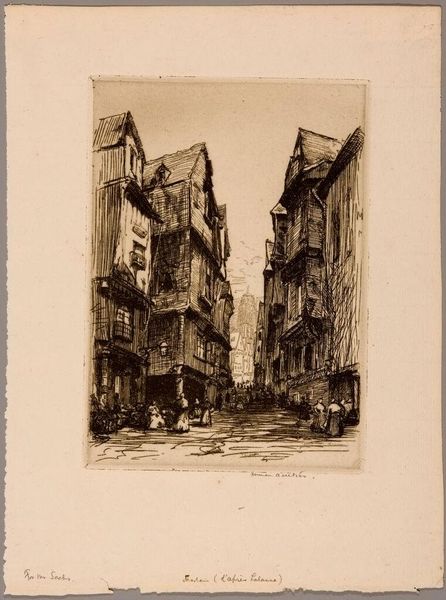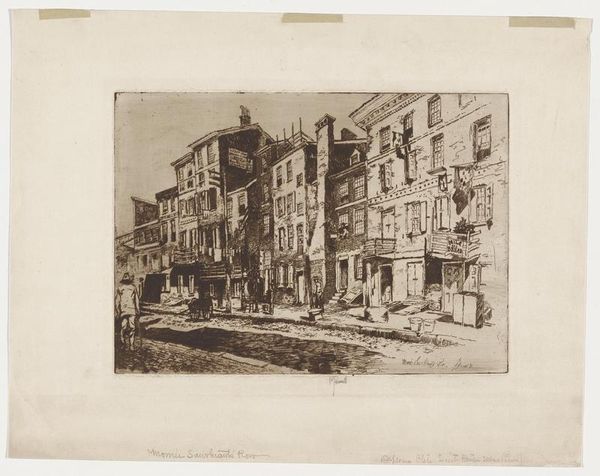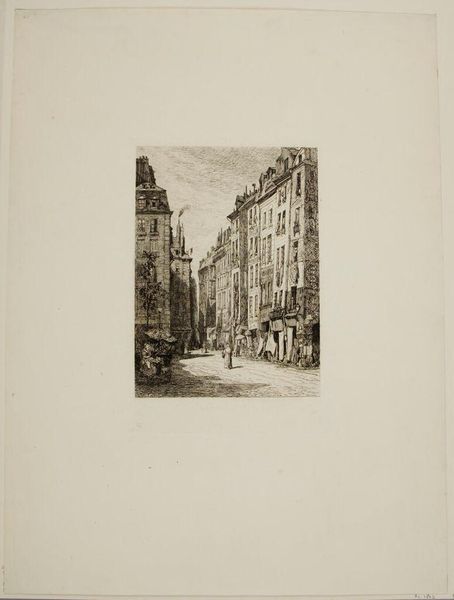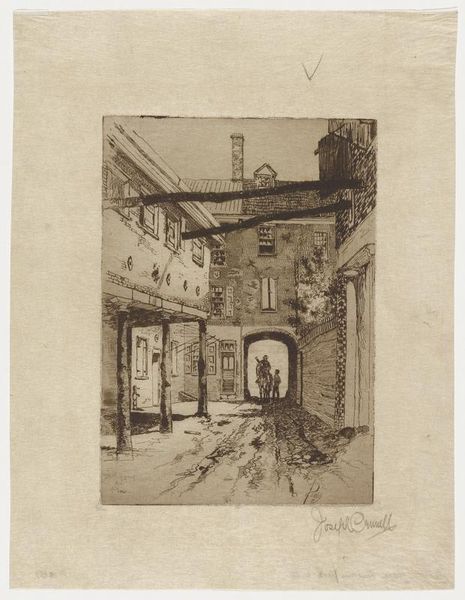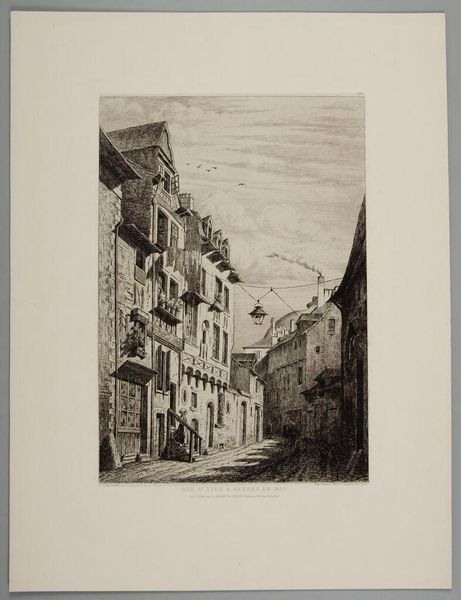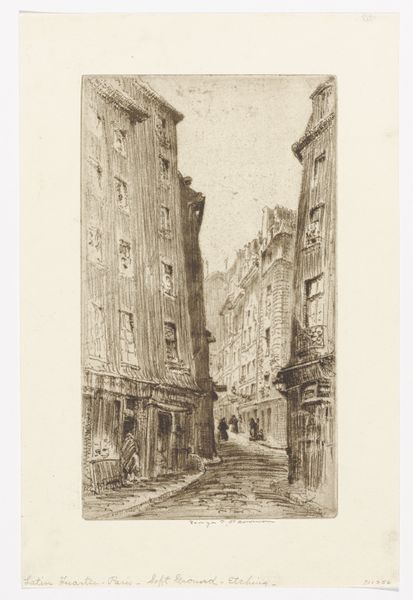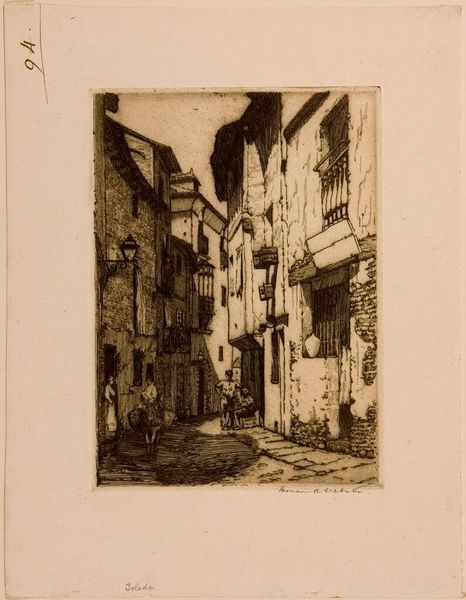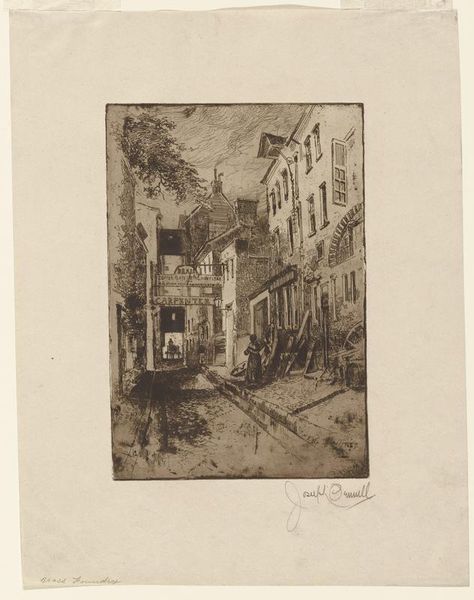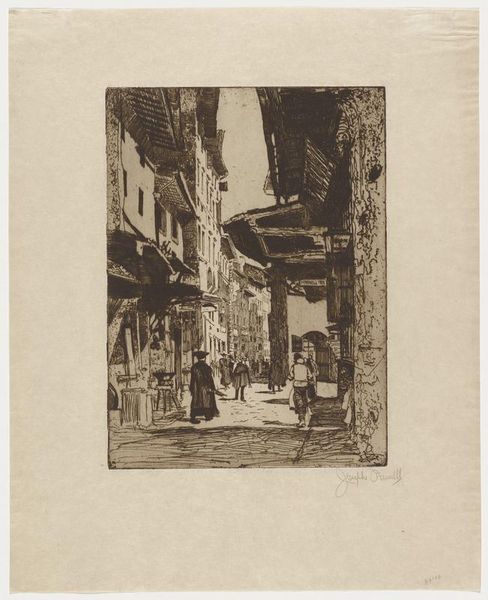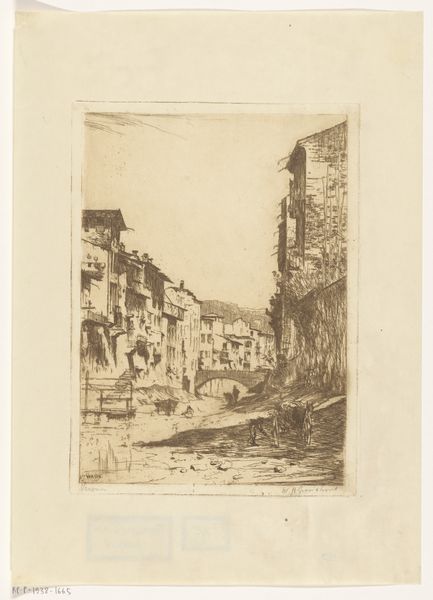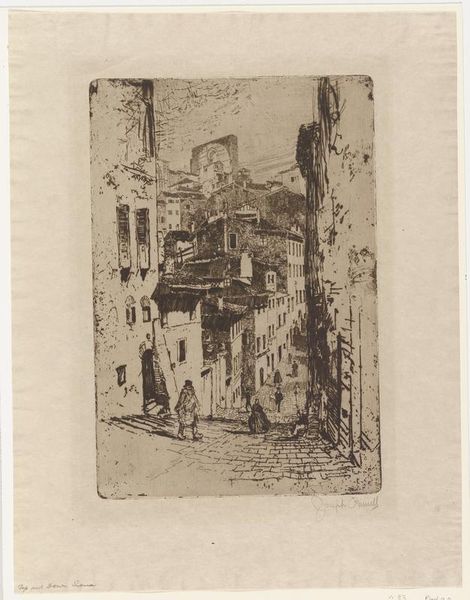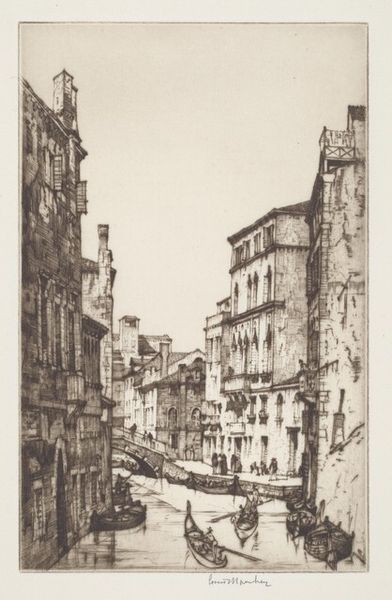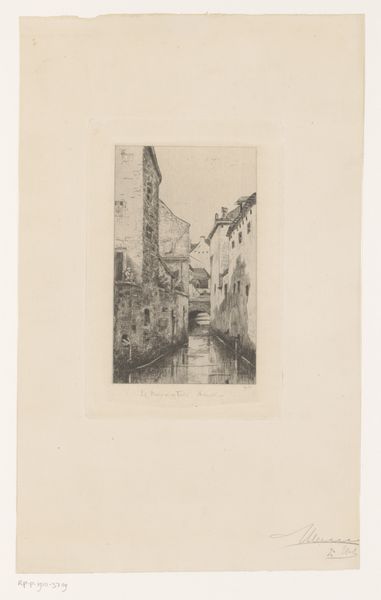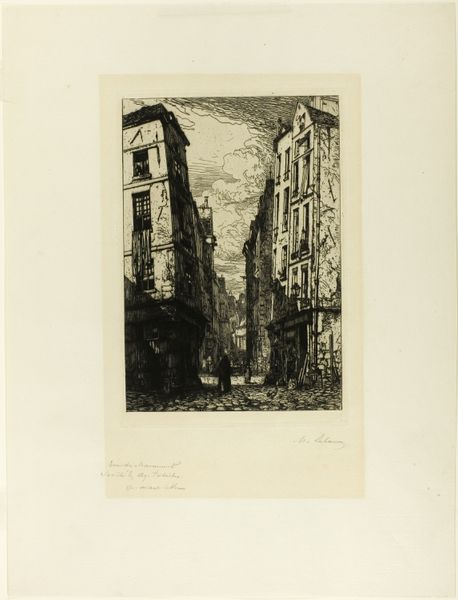
print, etching
# print
#
etching
#
etching
#
cityscape
#
realism
Dimensions: 7 13/16 x 5 15/16 in. (19.84 x 15.08 cm) (plate)14 3/16 x 10 13/16 in. (36.04 x 27.46 cm) (sheet)
Copyright: No Copyright - United States
Editor: Here we have Joseph Pennell's "Sieur Georges," an etching from 1882. It depicts a city street with a couple of figures walking along the sidewalk. It’s interesting how he used such delicate lines to convey a sense of depth and atmosphere. How do you interpret this work? Curator: Well, seeing "Sieur Georges," I’m immediately drawn to the way Pennell captures a sense of urban life and social space during that period. I see this image as a narrative about the relationship between the architecture and the people who inhabit it, particularly in relation to class. Notice the buildings - their ornate facades perhaps signaling a certain social standing. But then, consider the figures, rendered with less detail, almost anonymous. Editor: That's a great point! I hadn't considered how the rendering styles might reflect class distinctions within the city. Curator: What does that say about who gets represented and how, right? And Pennell’s choice of etching as a medium feels important here. Etching allows for fine lines and details but it can also produce a sense of grittiness. Consider the uneven textures. Do those choices resonate with a broader historical understanding of realism in art at this time? Is this scene actually realistic? Or is Pennell creating a deliberate representation of city life, loaded with symbolic meaning? Editor: It does seem more interpretive than straightforward documentation now that you mention it. What would that symbolic meaning be? Curator: Perhaps he is pointing towards the inherent power dynamics embedded within urban environments, showing the interplay between wealth, social structure, and anonymity. The etching, therefore, functions not merely as a depiction, but as a commentary on the very fabric of society. Editor: I never thought about the connection between urban space and social dynamics this way. Thanks for opening my eyes to that. Curator: Likewise! Looking closely together certainly adds enriching perspectives and invites new ways to understand art and history as actively connected.
Comments
No comments
Be the first to comment and join the conversation on the ultimate creative platform.
